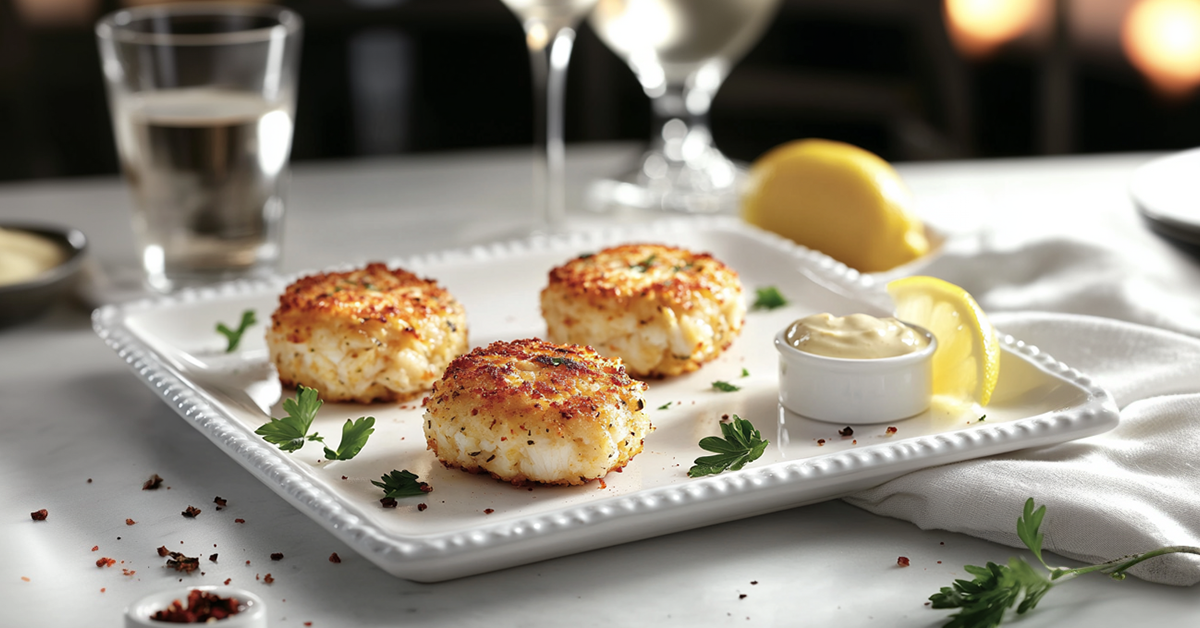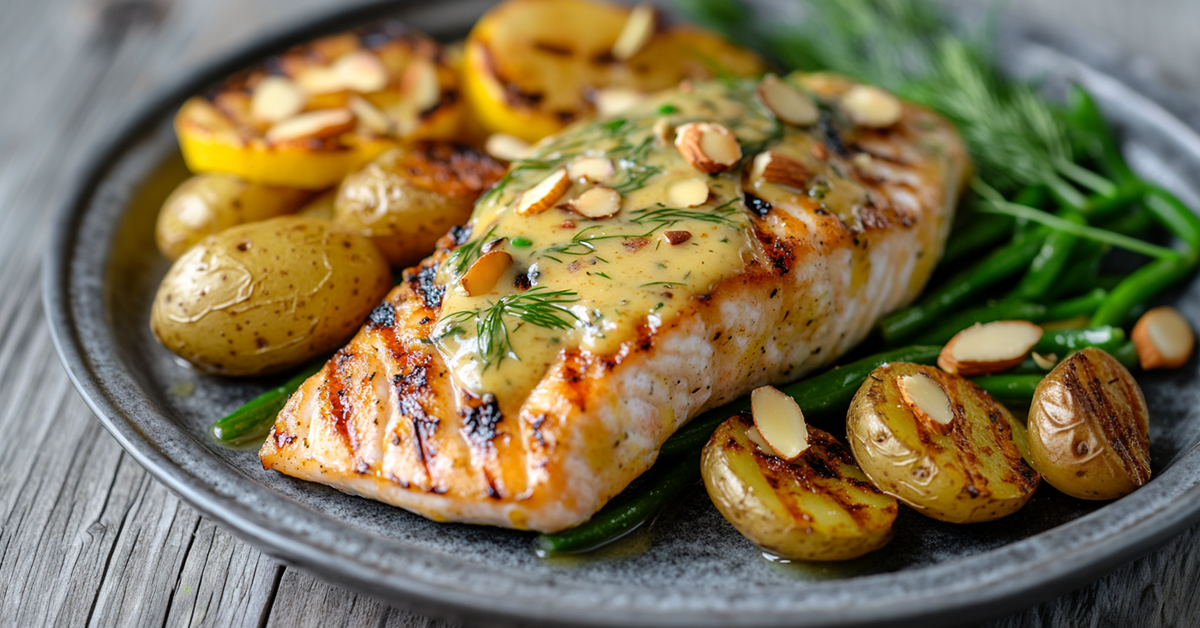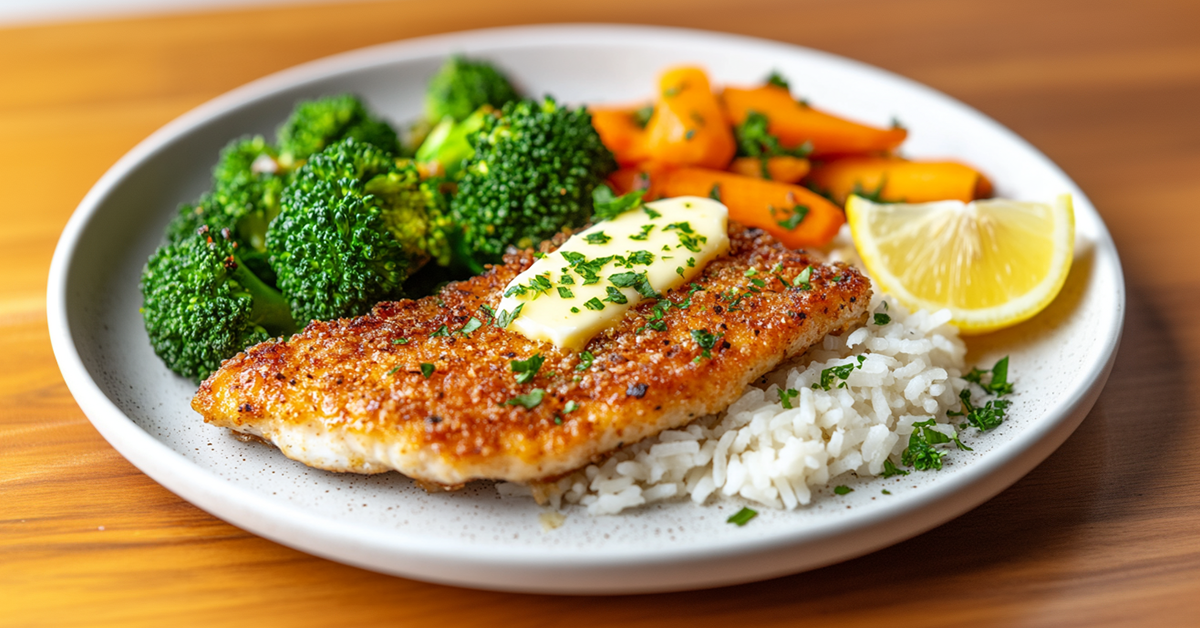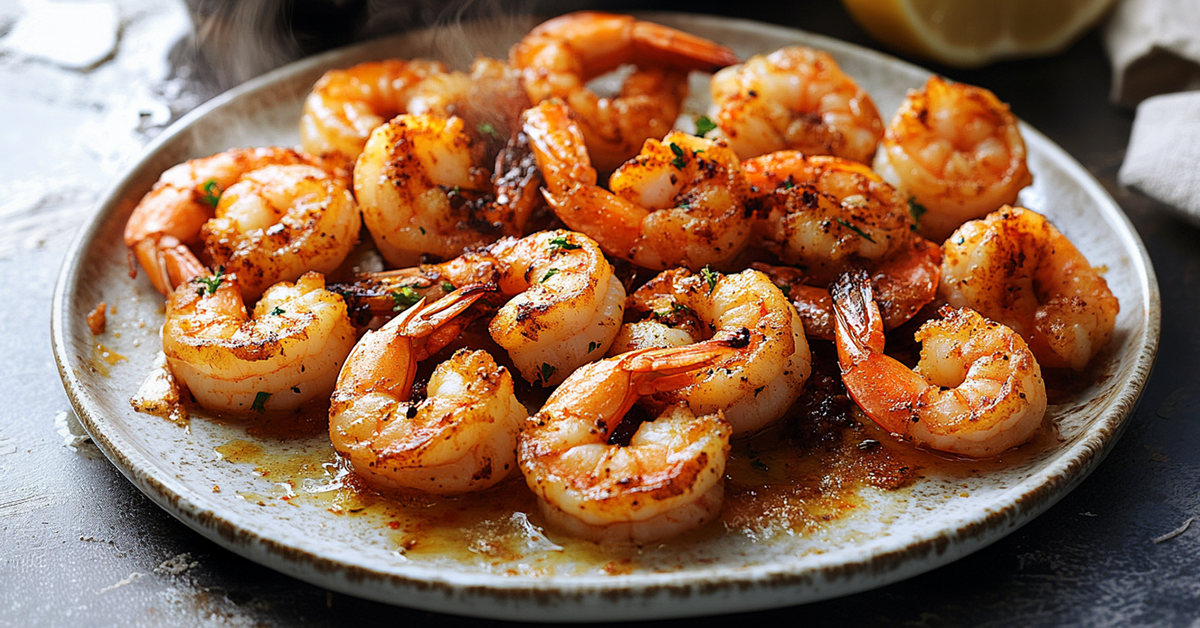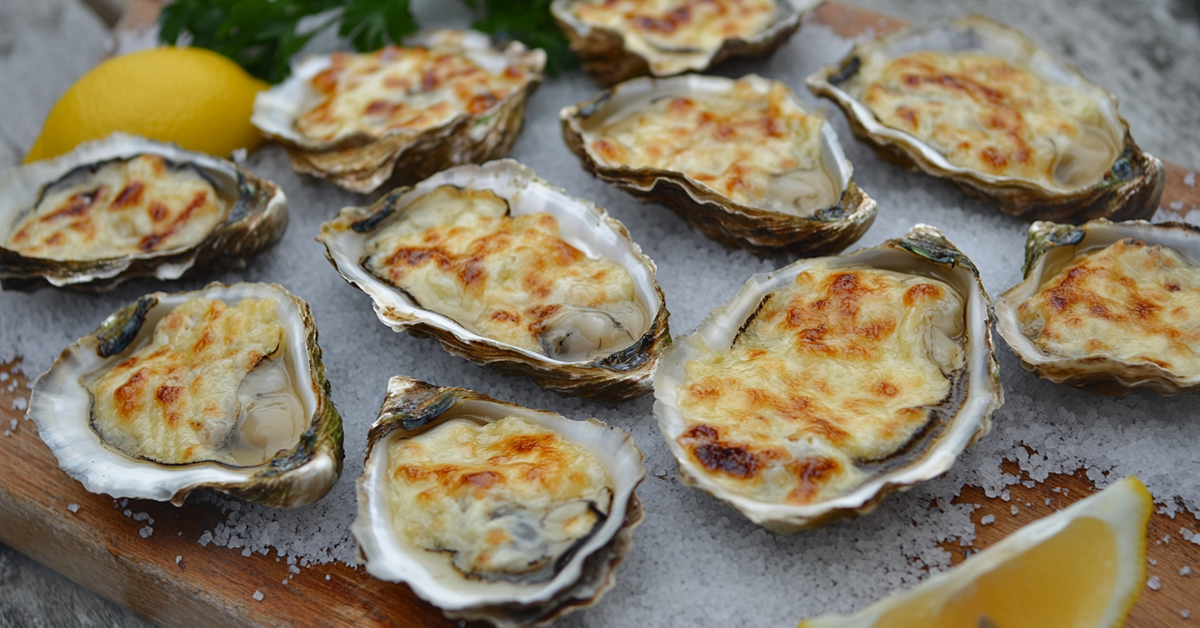Baked crab cakes offer the perfect blend between a traditional crab cake and a warm, satisfying dip, making them an irresistible addition to your recipe collection. Whether you’re hosting a dinner party or planning a special family meal, you’ll appreciate that these seafood delights pack 9 grams of protein per serving while keeping calories reasonable at 269 per portion.
In fact, preparing crab at home is more cost-effective than you might think. With snow crab often on sale for just $7.99 per pound during holidays, you can create an entire crab-focused meal with sides for under $25. Additionally, since most crab is pre-cooked before freezing, you’ll find the cooking process straightforward and nearly foolproof. This comprehensive guide will walk you through creating perfectly crispy, oven-baked crab cakes that rival any restaurant version.
Table of Contents
Essential Equipment for Perfect Baked Crab Cakes
Getting ready to make perfect baked crab cakes starts with gathering the right equipment. Your kitchen likely already has most of these tools, moreover, any missing items are readily available at local stores.
Here’s your essential equipment checklist:
- A heavy-duty baking sheet with a rimmed edge to prevent any drips
- Parchment paper or a silicone baking mat for non-stick results
- A large mixing bowl for combining ingredients
- Measuring cups and spoons for precise portioning
- A food processor (or alternatively, a sharp knife) for fine ingredient chopping
- Metal spatula with a thin edge for easy flipping
- Kitchen scale for accurate ingredient measurements
- Wire cooling rack to maintain crispiness after baking
The most important piece in your arsenal is undoubtedly the baking sheet. Specifically, look for one that’s thick and sturdy – this prevents warping at high temperatures and ensures even heat distribution. A warped sheet can cause your crab cakes to cook unevenly or slide around.
Accordingly, invest in good-quality parchment paper or a silicone mat. These create a non-stick surface that helps achieve that coveted golden-brown crust without losing any of the delicate crab mixture to the pan. Furthermore, they make cleanup significantly easier.
A food processor, although not strictly necessary, saves considerable time when chopping ingredients. If you don’t have one, a sharp knife works perfectly fine – it just requires more effort and time. The key is achieving uniformly sized pieces for consistent texture.
Your mixing bowl should be larger than you think you need. This extra space allows you to fold ingredients gently without spilling, consequently preserving the delicate crab meat structure. A stainless steel bowl is ideal as it maintains a cool temperature while you’re working with the mixture.
The wire cooling rack might seem optional, but it’s crucial for maintaining that perfect crispy exterior. When your crab cakes come out of the oven, they release steam. Placing them directly on a plate can trap this moisture, making the bottom soggy. The cooling rack allows air circulation, preserving that delightful crunch you worked so hard to achieve.
Read also: Fried Crabs Recipe for Beginners
Remember, quality equipment doesn’t necessarily mean expensive equipment. Focus on durability and functionality rather than brand names. With these tools in your kitchen, you’re well-equipped to create restaurant-quality baked crab cakes right at home.
The Science Behind Crispy Baked Crab Cakes
Understanding the science behind crispy baked crab cakes helps you create the perfect texture every time. Let’s explore the fascinating culinary chemistry that makes these seafood delights so special.
How baking affects texture
The magic of baked crab cakes happens through a process called Maillard reaction. This chemical reaction between proteins and sugars creates that golden-brown crust you’re aiming for. Indeed, baking provides even heat distribution, allowing the exterior to develop a consistent crispy shell while keeping the interior tender.
Moisture control techniques
Controlling moisture is crucial for achieving the ideal texture. Here are the key techniques:
- Pat the crab meat thoroughly with paper towels
- Salt the crab meat 30 minutes before mixing
- Use fresh breadcrumbs instead of dried ones
- Let formed cakes rest in the refrigerator for 30 minutes
- Place cakes on a wire rack while baking
Temperature considerations
The perfect temperature balance creates that coveted contrast between crispy exterior and moist interior. Generally, preheating your oven to 400°F (204°C) provides the sweet spot for crab cake perfection. Nevertheless, you’ll want to position the rack in the middle of the oven to ensure even heat distribution.
Particularly important is the internal temperature – your crab cakes should reach 165°F (74°C) for food safety. Using an instant-read thermometer helps guarantee both safety and optimal texture.
Binding principles
The secret to crab cakes that hold together lies in understanding binding science. Your binder (typically egg and mayonnaise) creates a protein network that traps moisture and holds ingredients together. Similarly, breadcrumbs act as moisture absorbers and structural supports.
The ratio of binder to crab meat is critical – too much creates a dense cake, too little results in crumbling. For every pound of crab meat, use:
- 1 large egg
- ¼ cup mayonnaise
- ¾ cup breadcrumbs
These proportions create the perfect balance between cohesion and tenderness. The proteins in the egg coagulate during baking, forming a stable structure that keeps your crab cakes from falling apart while maintaining their delicate texture.
Read also: Baked Rock Fish Recipe
Remember to handle the mixture gently when forming the cakes. Overworking breaks down the crab meat’s natural texture and releases excess moisture, affecting the final result. Think of it like handling a delicate pastry – less is more when it comes to mixing and shaping.
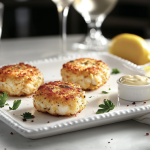
Crispy Baked Crab Cakes
- Total Time: 35 minutes
- Yield: 6 crab cakes 1x
Description
Create these delightful seafood treats right in your oven with this foolproof recipe that delivers restaurant-quality results. Your baked crab cakes will have a perfectly crispy exterior while maintaining a moist, flavorful interior.
This classic recipe focuses on highlighting the sweet, delicate flavor of lump crab meat with minimal filler. Initially designed for home cooks, these baked crab cakes offer all the taste of traditional fried versions without the mess of oil.
Ingredients
- 1 pound jumbo lump crab meat
- 1/4 cup mayonnaise
- 1 large egg
- 2 teaspoons Dijon mustard
- 1 teaspoon Worcestershire sauce
- 1 teaspoon Old Bay seasoning
- 1/4 cup panko breadcrumbs
- 2 tablespoons olive oil
- 6 sprigs fresh parsley, finely chopped
- 1 small lemon, zested
Instructions
- First thing to remember, preheat your oven to 425°F.
- In a large bowl, combine lemon zest, chopped parsley, egg, mayonnaise, Dijon mustard, hot sauce, as well as kosher salt.
- To begin with, check the crab meat for any shells or cartilage, afterward fold it gently into the mixture.
- Add panko breadcrumbs and combine carefully to maintain large chunks of crab.
- Shape the mixture into 6 cakes (about ½ cup each).
- Important to realize, refrigerate the formed cakes for at least 30 minutes.
- Place cakes on a prepared baking sheet and brush with olive oil.
- Bake for 12-14 minutes until golden brown.
Notes
– To clarify, the internal temperature should reach 165°F for food safety
– Store unbaked crab cakes in the refrigerator for up to 24 hours
– Leftover crab cakes keep well in an airtight container for up to 2 days
– For extra crispiness, you can broil the cakes for the final minute
- Prep Time: 15 minutes
- Cook Time: 20 minutes
- Category: Seafood
- Method: Baking
- Cuisine: American
Best Sauces for Baked Crab Cakes
The perfect sauce can elevate your baked crab cakes from delicious to extraordinary. Essentially, you’re looking for complementary flavors that enhance without overpowering the delicate crab meat.
Here are five classic sauce options that pair beautifully with your homemade crab cakes:
- Classic Remoulade: A French-inspired sauce combining mayonnaise, capers, pickles, and herbs
- Lemon Aioli: A light, citrusy blend of mayonnaise, fresh lemon juice, and garlic
- Tartar Sauce: A traditional option mixing mayonnaise, pickles, and fresh herbs
- Cajun Cream: A spicy twist featuring cream, Cajun seasonings, and fresh herbs
- Mango Salsa: A fresh alternative combining diced mango, red onion, cilantro, and lime juice
Primarily, you’ll want to consider the temperature of your sauce. Cold sauces provide a refreshing contrast to warm crab cakes, meanwhile, warm sauces create a more unified dining experience.
| Sauce Type | Best Served | Prep Time | Storage Life |
|---|---|---|---|
| Cold Sauces | Chilled | 5-10 mins | 3-5 days |
| Warm Sauces | Fresh made | 10-15 mins | 1-2 days |
Above all, remember that sauce should complement, not overwhelm. A good rule of thumb is to serve sauce on the side, allowing your guests to control the amount they use. In addition to traditional options, you might consider creating a sauce bar for special occasions, offering multiple choices for your guests to experiment with.
Notably, most sauces can be prepared ahead of time, making them perfect for entertaining. Store them in airtight containers in your refrigerator, ultimately bringing cold sauces to room temperature about 15 minutes before serving for the best flavor experience.
For a quick homemade option, combine 1/2 cup mayonnaise, 1 tablespoon Dijon mustard, 1 teaspoon Worcestershire sauce, and a squeeze of fresh lemon juice. This basic sauce serves as an excellent starting point for creating your own signature blend.
Read also: Roasted Branzino Lemon and Herbs Recipe
Perfect Side Dishes for Crab Cakes
Selecting the right side dishes can transform your baked crab cakes into a complete, satisfying meal. From light salads to hearty vegetables, your options are endless.
Light and refreshing sides work exceptionally well with rich crab cakes. A classic coleslaw offers crunch and tang, essentially cleansing your palate between bites. For a modern twist, try an arugula salad with shaved fennel and citrus segments.
Grilled or roasted vegetables make excellent companions to your seafood centerpiece. Consider these seasonal options:
| Season | Vegetable Pairings |
|---|---|
| Spring | Asparagus, peas, radishes |
| Summer | Corn, zucchini, tomatoes |
| Fall | Brussels sprouts, butternut squash |
| Winter | Roasted root vegetables |
Primarily, you’ll want to balance textures and flavors. Here are some foolproof combinations:
- Crisp green beans with almonds and lemon zest
- Roasted fingerling potatoes with herbs
- Grilled corn succotash
- Mixed greens with champagne vinaigrette
- Quinoa pilaf with seasonal vegetables
Certainly, starch-based sides deserve consideration. A small portion of garlic mashed potatoes or rice pilaf can round out your plate without overshadowing the crab cakes. Occasionally, simple crusty bread might be all you need.
For summer gatherings, grilled vegetables shine alongside your baked crab cakes. Ultimately, the key is choosing sides that complement without competing. A medley of grilled asparagus and bell peppers brings color and nutrition to your plate.
Nonetheless, don’t forget about texture contrast. While your crab cakes offer a crispy exterior and tender interior, consider adding something with crunch. A fresh cucumber and tomato salad or crispy roasted Brussels sprouts can provide that satisfying textural element.
You may like: Baked Tuna Fish Recipe
Remember that portion size matters. Your side dishes should support, not overwhelm, the star of the show. Think of your plate as a canvas – the crab cakes are the focal point, and your sides are the supporting elements that complete the composition.
Health Benefits of Baked Crab Cakes
Primarily focused on lean protein, baked crab cakes stand out as a nutritious choice in your meal planning. These golden-crusted delights offer substantial health benefits, especially when prepared in the oven rather than deep-fried.
Your body benefits from the high-quality protein in crab meat, which supports muscle maintenance and growth. Essentially, a single baked crab cake provides about 15-20 grams of protein, making it an excellent option for your fitness goals.
Here’s what makes baked crab cakes a nutritional powerhouse:
- Omega-3 fatty acids for heart and brain health
- Vitamin B12 for nerve function and energy
- Selenium for immune system support
- Zinc for wound healing and metabolism
- Low saturated fat content when baked
| Nutrient Comparison | Baked Crab Cake | Fried Crab Cake |
|---|---|---|
| Calories | 290 | 450 |
| Total Fat | 12g | 28g |
| Saturated Fat | 2g | 8g |
| Cholesterol | 85mg | 95mg |
Notably, choosing to bake your crab cakes preserves their nutritional value while reducing unnecessary calories. The oven-baking method requires minimal added fats, ultimately helping you maintain a balanced diet without sacrificing flavor.
Zinc and selenium in crab meat support your immune system, whereas B vitamins boost energy levels and maintain nervous system health. These nutrients work together to enhance your overall wellbeing while satisfying your taste buds.
For those watching their sodium intake, you can easily control the salt content when preparing baked crab cakes at home. This control over ingredients makes them suitable for various dietary preferences and restrictions.
The omega-3 fatty acids found in crab meat contribute to:
- Brain function improvement
- Reduced inflammation
- Better heart health
- Enhanced joint mobility
Opting for baked crab cakes over fried versions aligns perfectly with a heart-healthy eating pattern. The cooking method preserves the natural nutrients while minimizing added fats, making it an excellent choice for those monitoring their cardiovascular health.
References:
– Boxhillpizzeria
Nutritional Information
Looking at the complete nutritional profile of your baked crab cakes helps you make informed dietary choices. A detailed breakdown reveals the exact nutrients you’re getting in each serving.
Here’s the comprehensive nutritional information per serving (one 3-ounce crab cake):
| Nutrient | Amount |
|---|---|
| Calories | 269 |
| Total Fat | 12.5g |
| Saturated Fat | 2.1g |
| Cholesterol | 85mg |
| Sodium | 590mg |
| Total Carbohydrates | 15g |
| Dietary Fiber | 0.8g |
| Sugars | 1.2g |
| Protein | 25g |
Beyond these basic macronutrients, your baked crab cake provides essential vitamins and minerals:
- Vitamin B12: 5.7 mcg (238% DV)
- Selenium: 37.4 mcg (68% DV)
- Zinc: 4.8mg (44% DV)
- Iron: 1.2mg (7% DV)
- Calcium: 86mg (7% DV)
Primarily, the cooking method affects the final nutritional content. Essentially, baking reduces the total fat content compared to traditional frying methods. Subsequently, this makes baked crab cakes a healthier choice for those monitoring their fat intake.
The protein content remains consistently high regardless of cooking method, making these crab cakes an excellent option for muscle maintenance and growth. Notably, the amino acid profile is complete, providing all essential amino acids your body needs.
For those tracking their macronutrient ratios, here’s the breakdown:
- Protein: 37% of total calories
- Fat: 42% of total calories
- Carbohydrates: 21% of total calories
Understanding portion sizes helps you maintain balanced nutrition. One standard serving equals one 3-ounce crab cake, roughly the size of a deck of cards. This portion provides enough protein to meet about 50% of your daily requirements, based on a 2,000-calorie diet.
The sodium content deserves attention, particularly if you’re watching your salt intake. The 590mg per serving represents about 26% of the recommended daily limit. Ultimately, you can reduce this by adjusting the seasoning in your recipe without compromising flavor.
Regarding cholesterol, each serving contains 85mg, which fits within the American Heart Association’s recommendations for daily cholesterol intake. The majority of this comes from the crab meat itself, not the preparation method.
For those following specific dietary plans:
| Diet Type | Compatibility Notes |
|---|---|
| Keto | Moderate – watch breadcrumb content |
| Paleo | Modify – substitute traditional breadcrumbs |
| Mediterranean | Excellent fit |
| Low-carb | Moderate – 15g net carbs per serving |
The glycemic impact remains relatively low due to the high protein and fat content, which helps slow down carbohydrate absorption. This makes baked crab cakes suitable for those managing blood sugar levels.
Micronutrient density is another advantage of choosing crab as your protein source. The selenium content supports thyroid function and acts as an antioxidant, while B12 maintains nervous system health and supports energy production.
For optimal nutritional benefit, consider these serving suggestions:
- Pair with fiber-rich vegetables to balance the meal
- Add a side of whole grains for sustained energy
- Include a leafy green salad to boost vitamin content
- Serve with citrus fruits to enhance iron absorption
The omega-3 fatty acid content varies depending on the type of crab used, but generally provides between 350-500mg per serving. These essential fatty acids support brain health and reduce inflammation.
References:
– Eat This Much
Conclusion
Baked crab cakes stand out as a perfect blend of restaurant-quality taste and home-cooking simplicity. Their crispy exterior and tender interior make them an excellent choice for both casual dinners and special occasions.
Armed with the right equipment and understanding of binding principles, you’ll create perfectly textured crab cakes every time. These protein-rich delights offer substantial nutritional benefits while keeping calories reasonable at 269 per serving.
Pairing possibilities enhance your dining experience significantly. Whether you choose a classic remoulade sauce or seasonal vegetable sides, each combination brings unique flavors to your plate. Your homemade crab cakes will certainly rival restaurant versions, especially when you master the proper baking temperature and moisture control techniques.
Remember that success lies in quality ingredients and gentle handling. Careful attention to forming and chilling the cakes before baking rewards you with consistently excellent results. These golden-brown treasures prove that seafood dishes can be both nutritious and delicious when prepared thoughtfully at home.

